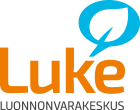Integrated chain
The average size of the 190 contract farms in Finland is around 60,000 broilers. Producers are required to demonstrate their qualifications by law, based either on training or sufficient work experience. In addition, mother hens, i.e. parent stock broiler breeders, that lay eggs for birds bred for meat are kept on around forty breeder farms in Finland.
In addition to legislation, the national production method includes guidelines and practices for meat chicken production. These are stricter than required in European Union and national Finnish legislation, and all parties involved in the production chain are committed to compliance.
Feeding
Finnish broiler chickens are raised for five to six weeks indoors, ranging free on a peat or wood shavings litter on the broiler farm. They can sleep in darkness at least 6 hours in a 24-hour period and eat and drink whenever they want. Production is carefully planned and controlled. The growth conditions of poultry, such as the climate (temperature and humidity) of the broiler house are monitored on a 24/7 basis every day of the year.
Most of the feed is domestic grain, either cultivated on the home farm or acquired from feed manufacturers. Soybeans, which are necessary for protein, are imported from outside the EU. In accordance with the Finnish national production method, each import batch is examined for salmonella.
Product safety
In Finland, all broiler flocks are examined for salmonella. All types of salmonella are controlled in Finland, even though it is only mandatory in the European Union to control the two types most commonly found in humans. None of the more than 2000 serotypes of salmonella is accepted. Finnish broiler is therefore a safe, high quality choice.
The national Finnish production method involves the delivery of all day-old chicks in one batch to the rearing farm and the whole flock is sent for slaughter at the same time (the all in-all out method). The broiler houses are emptied, washed, dried out and disinfected carefully between growing batches. Other EU countries commonly use the thinning out method, involving broilers sent for slaughter several times. This method raises the risk of infection and spread of animal diseases, while increasing the risk of human disease.
A healthy chicken in a healthy body
Professional producers promote the welfare and health of broiler by measures such as providing high-quality feed and maintaining optimal living (or rearing) conditions. For example, day-old chicks require a temperature of more than thirty three degrees, which is gradually lowered as the birds grow. Careful control of living conditions, such as the temperature, humidity and air quality, also prevents behavioural problems, which, in some countries, can be concealed through measures such as beak trimming. Unlike other EU countries, Finland, Sweden and Norway have banned beak trimming.
The use of antibiotics in broiler production is very limited in Finland. The aim is to maintain the welfare and health of poultry through good production conditions – not medication. Animal Health ETT has collected data on the antimicrobial medication of broiler for several years. This data proves that Finnish growers (or commercial broilers) have not required medication for many years.
In Finland, broilers have no severe animal diseases such as avian influenza (AI), Gumboro disease, Newcastle disease (ND) or severe respiratory disorders such as ART or ILT. Broiler breeders’ vaccination schemes are restricted and growers (or commercial broilers) are not vaccinated at all.
An environmentally friendly production chain
Broiler production requires an environmental permit in accordance with the Environmental Protection Act. The environmental permit provides regulations on issues such as operational monitoring, emissions and waste management.
The environmental impacts of Finnish broiler meat have proven to be the lowest in comparison with other types of meat. Concentration of contract farms in the vicinity of slaughterhouses guarantees short distances for animal transport. Geographically, the farms are located in the grain growing area of south-western Finland, which means that chicken broiler feed is largely produced locally in the nearby area.
Broiler manure has high nutrient content and is mainly recycled to the fields as a fertiliser for cultivated plants. It can also be processed further, for example for use as garden fertiliser or used as substrate for champignon mushrooms or as part of energy production.
The farms also seek to make use of renewable resources in the nearby areas, such as peat and wood chips, used for heating of broiler farms.
Slaughterhouses use non-food-grade by-products for the production of feed for pets and fur animals. The remaining by-products are processed into fertilisers and energy.
Source: Finland’s Broiler Association, Link
Photo in upper edge: Erkki Oksanen/Luke
